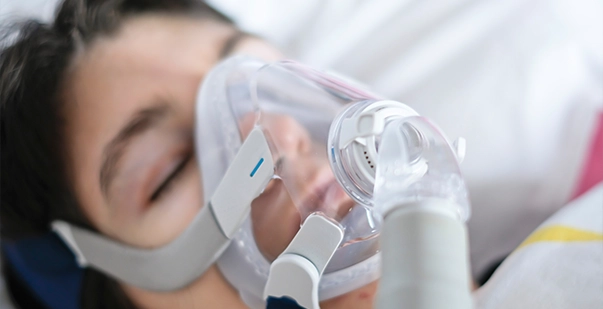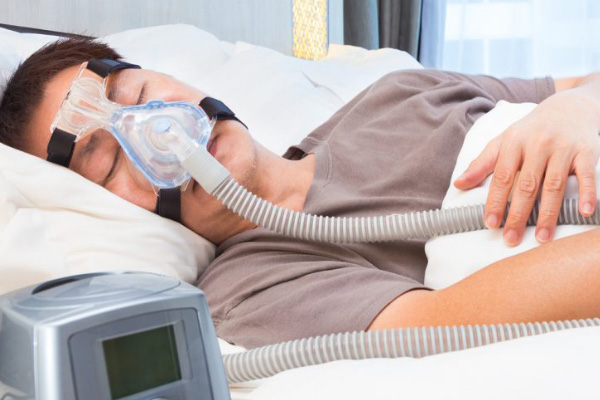Custom-made Plans Readily Available for BiPAP Rental Solutions
Custom-made Plans Readily Available for BiPAP Rental Solutions
Blog Article
Bipap vs. CPAP: Which Is the most effective for Your Rest Condition?
When browsing the complexities of sleep disorders, the selection in between BiPAP and CPAP treatment is a critical factor to consider. Each modality supplies special benefits tailored to specific problems, yet the choice rests on individual person requirements and comfort levels. While CPAP supplies a consistent airflow ideal for obstructive sleep apnea, BiPAP's twin pressure settings may improve convenience for those with even more elaborate respiratory problems. Recognizing these differences can considerably impact treatment effectiveness, leaving one to ponder which choice absolutely straightens with their health and wellness needs and way of life.
Recognizing Rest Disorders
Sleep conditions incorporate a variety of conditions that interrupt normal rest patterns, affecting both the high quality and period of rest. These problems can materialize in various types, consisting of sleeping disorders, sleep apnea, narcolepsy, agitated leg disorder, and parasomnias. Each problem provides one-of-a-kind difficulties, often causing substantial daytime fatigue, cognitive disability, and psychological disruptions.
Sleeping disorders is identified by trouble falling or remaining asleep, while rest apnea involves duplicated disturbances in breathing during sleep, commonly leading to fragmented rest. Narcolepsy, on the other hand, is noted by too much daytime drowsiness and sudden sleep attacks. Agitated leg disorder causes uneasy feelings in the legs, prompting an unmanageable impulse to relocate them, which can additionally prevent the ability to drop off to sleep.
The impact of sleep disorders prolongs beyond private health and wellness, affecting total performance, relationships, and quality of life. Understanding the particular nature of each disorder is important for efficient medical diagnosis and therapy. As rest health and wellness ends up being significantly identified as an essential part of overall well-being, attending to these conditions is necessary for boosting both sleep high quality and everyday functioning.
Just How CPAP Functions
Continuous Positive Airway Pressure (CPAP) therapy is regularly utilized as a main therapy for obstructive sleep apnea (OSA) The system of CPAP involves the use of a machine that delivers a constant stream of air through a mask worn during rest. This air flow keeps favorable pressure in the respiratory tract, stopping the collapse or obstruction of the throat that can occur during rest.
When a patient takes a breath in, the CPAP device provides a constant flow of air, ensuring that the respiratory tract stays open - BiPAP Rental. This not only reduces the signs and symptoms of OSA, such as snoring and interrupted rest patterns, but additionally reduces the connected health threats, including cardiovascular issues and daytime fatigue
The stress settings on a CPAP equipment can be personalized to meet private patient requirements, commonly identified via a sleep research. Patients normally undergo titration research studies to locate the ideal stress level for their unique problem. Routine follow-up and changes may be essential to guarantee performance and comfort. In general, CPAP treatment has actually been shown to dramatically improve the high quality of rest and total health for individuals dealing with obstructive rest apnea.
Just How BiPAP Functions
BiPAP, or Bilevel Favorable Airway Stress, is a specific type of non-invasive air flow that is especially valuable for patients with conditions such as complex sleep apnea or respiratory disorders. Unlike link CPAP, which provides a constant stream of air at a solitary stress, BiPAP supplies two unique pressure settings: a higher inspiratory pressure for inhalation and a lower expiratory stress for exhalation. This dual-pressure strategy enables simpler breathing, decreasing the initiative needed during exhalation.
The gadget runs via a mask fitted over the nose or mouth, attached to an equipment that generates air stress. When the patient inhales, the maker supplies the greater stress to assist with air flow, ensuring that the airway continues to be open. Upon exhalation, the machine instantly lowers the pressure, making it more comfy for the individual to breathe out.

Secret Distinctions Between BiPAP and CPAP

On the other hand, BiPAP (Bilevel Favorable Air passage Pressure) provides two different stress settings: one for inhalation and a reduced one for exhalation. This dual pressure system enables even more comfy breathing, particularly for individuals that have problem with exhaling against a constant stress. BiPAP is typically advised for patients with complex sleep apnea, chronic obstructive lung condition (COPD), or those that require additional support throughout rest.
Furthermore, the intricacy of BiPAP tools typically leads to a greater expense and calls for more cautious titration than CPAP. BiPAP Rental. Recognizing these vital distinctions can aid in recognizing which gadget may be better for details rest problems, establishing why not check here the groundwork for informed therapy choices
Picking the Right Treatment
The choice between BiPAP and CPAP treatment largely pivots on the specific characteristics of the sleep condition, the client's overall wellness, and their comfort with the device. CPAP, which provides a continuous stream of air, is generally recommended for obstructive rest apnea (OSA)
Conversely, BiPAP provides 2 degrees of stress: one for breathing and a reduced one for exhalation. This twin stress system is valuable for clients with intricate rest apnea or those who experience trouble breathing out against a continual pressure. Furthermore, BiPAP is commonly suggested for people with respiratory conditions, such as chronic obstructive pulmonary condition (COPD), where varying stress settings can enhance convenience and compliance.
Inevitably, a complete analysis by a sleep expert, consisting of a sleep study, can aid figure out which treatment aligns finest with the client's demands. Variables such as convenience, simplicity of use, and details medical problems must also be taken right into factor to consider to enhance treatment outcomes.
Final Thought
In summary, both BiPAP and CPAP serve distinct objectives in the administration of sleep disorders. CPAP works for obstructive sleep apnea through consistent airflow, while BiPAP supplies twin stress settings that improve convenience for those with intricate sleep apnea or respiratory system issues. The choice between these therapies ought to be led by individual needs and problems, necessitating an extensive evaluation by a rest professional to make sure optimal treatment end results and improved quality of rest.

In general, CPAP treatment has actually been shown to substantially enhance the high quality of rest and total health and wellness for people enduring from obstructive rest apnea.
BiPAP is typically advised for people with complex sleep apnea, chronic obstructive pulmonary disease (COPD), or those that require extra support throughout sleep.
CPAP is reliable for obstructive rest apnea via constant air movement, while BiPAP provides double stress settings that enhance comfort for those with complicated rest apnea or respiratory concerns.
Report this page